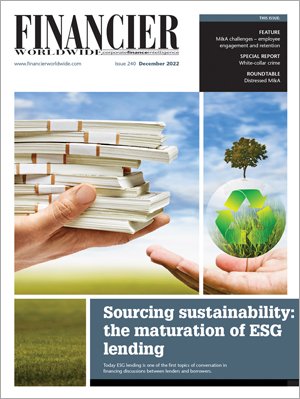Unitary effect: a new system for granting and litigating patents in Europe
December 2022 | FEATURE | INTELLECTUAL PROPERTY
Financier Worldwide Magazine
Following years of legal and political struggles, the European patent system is about to undergo a major transformation with the introduction of a unitary patent package consisting of the unitary patent (UP) and the Unified Patent Court (UPC).
The UP is a European patent, granted by the European Patent Office (EPO), which will have ‘unitary effect’ across all participating countries – a single, indivisible right, similar to a European Union Trade Mark (EUTM) or registered community design (RCD). The UPC will provide a centralised forum for the litigation of European patents, including the new unitary patents, in participating countries.
Moreover, the UPC is a court common to contracting member states and thus part of their judicial system. A contracting member state is one that has ratified the UPC Agreement, and 24 of the 27 current EU countries have agreed to participate in the Unified Patent Court and the EU unitary patent scheme.
“The UPC will provide a one-stop shop for patent litigation throughout a large part of Europe,” says Emmanuel Gougé, a partner at Pinsent Masons. “Decisions will be made by local and regional divisions of the UPC based across Europe that sit under the umbrella of one centralised judicial framework.
“The anticipated introduction of the new system will impact European patent filing and enforcement strategies for businesses in all sectors,” he continues. “The UP will coexist with, and be an alternative to, national patents and classic European patents (EPs). It will provide patent protection in all participating states, with a single patent registration, without the need for national validation.”
Extant systems
Currently, national courts and authorities decide on the infringement and validity of European patents. In practice, this can lead to difficulties when a patent proprietor wishes to enforce a European patent in several countries or when a third party seeks the revocation of a European patent.
In addition, litigation in multiple countries is expensive and there is a risk of diverging decisions and a lack of legal certainty. Forum shopping is typical as parties seek to take advantage of differences between national courts and their procedures.
“Before the new unitary patent package comes into force in March 2023, patent owners need to make two key decisions.”
The UPC agreement addresses these shortcomings by creating a specialised patent court with exclusive jurisdiction for litigation relating to unitary patent and European patents, harmonising the scope and limitations of the rights conferred by a patent, and remedies available beyond EU Directive 2004/48/EC (Enforcement Directive).
According to the EPO, the UPC will: (i) establish an effective forum for enforcing and challenging patents in Europe; (ii) end the need for litigation in different countries; (iii) enhance legal certainty through harmonised case law in the area of patent infringement and validity; (iv) provide simpler, quicker and more efficient judicial procedures; and (v) harmonise substantive patent law relating to the scope and limitations of the rights conferred as well as the remedies in cases of infringement.
Key decisions
Before the new unitary patent package comes into force in March 2023, patent owners need to make two key decisions. The first is what strategy to adopt for the management of their portfolio to take account of the new unitary patent. The second is whether to opt some or all of their existing European patents out of the jurisdiction of the new UPC.
“One of the most important changes to the rules relates to the requirements for opting a patent out of the UPC,” notes Sarah Taylor, a senior practice development lawyer at Pinsent Masons. “Amendments to the rules now require an application to opt out, or an application to withdraw an opt-out, to be made in respect of ‘all of the states’ for which an EP is granted, or an EP application is designated.”
Essentially, this means that an application to opt a patent out of the UPC must be made not just in respect of UPC contracting member states, but also in respect of all non-UPC states – that is, EU states such as Poland and Spain that are not participating in the UPC, and non-EU European Patent Convention (EPC) countries such as the UK, Switzerland and Turkey.
“For patent owners, the practical effect of this will be that more due diligence is likely to be required to ensure that all proprietors sign the opt-out application,” continues Ms Taylor. “So, enquiries to verify ownership should be undertaken now, before the sunrise period – which is a transitional period of seven years – during which patentees may start filing applications to opt patents out of the UPC, commences.”
Additionally, patent owners will also need to consider co-owned patents should they wish to opt out of the UPC system, something which also applies to licensees of European patents.
Shake-up
Perhaps the biggest development in European patent practice since the 1973 EPC, the new unitary patent package is poised to provide a major shake-up to how granted European patents will be enforced and challenged.
“The UP and the UPC are the building blocks which will supplement and strengthen the existing centralised European patent granting system,” concludes the EPO. “It offers users of the patent system a cost-effective option for patent protection and dispute settlement across Europe.
So, as the countdown to March 2023 continues, it is incumbent upon innovators in all fields, patent holding companies and anyone planning licensing or collaboration deals to formulate a strategy related to European patents – an exercise that is best started sooner rather than later.
© Financier Worldwide
BY
Fraser Tennant


